A Reader's Progress.
Sketch of the Snooter, whom you may remember from such books as After the Snooter, doing what he does best. Being an annoying bastard.

This is just pulled from my sketch folio.The Snooter's hand appearing to extend Campbell's nose is entirely accidental and means nothing. I think. First to ask for it in comments can have the drawing in the mail.
* * * *
Excellent gallery of the works of William Hogarth

I was talking about William Hogarth the other day and it carried over into the comments to the extent that I felt I owed a few more words on the subject. I was critical of the notion that "Hogarth’s sequential narratives... consolidated the graphic experiments of earlier prints and established a complex language of graphic devices that artists have borrowed from ever since". This has become accepted as fact among too many comics scholars.
My argument essentially is that it can't be so as I have never met a comics person who would know how to read Hogarth properly (myself included) let alone be influenced by his work. In support of my statement I quote this article by Martin Heusser reviewing
Reading Iconotexts:From Swift to the French Revolution. Peter Wagner. London: Reaktion Books, 1995.
"Reading Iconotexts is a study of 18th-century prints and their inscriptions, which Wagner prefers to call iconotexts in order to emphasize the high degree of mutual interdependence and interpenetration between word and image which they exhibit. In fact, Wagner claims that they form a specific genre, because in them, neither text nor image is free from the other."
"Reading Hogarth "right" is difficult for two reasons, one intrinsic and one extrinsic. On the one hand, these illustrations are in and of themselves heterogeneous; they represent both a critique and an enactment of 18th-century commercialization of culture and taste. On the other, modern interpretation suffers from a severely distorted view, because, over the generations, the immensely broad range of 18th-century cultural phenomena has been pared down to a very narrow body of samples.
Taking Hogarth's well-known first plate of A Harlot's Progress as an example (shown above), Wagner convincingly shows what he means. To "understand" this picture - that is, to get the maximum information out of it and to grasp it - we have to be capable of decoding a wealth of sign systems running criss-cross through its visual appearance. On a pictorial level, we find both the re-enactment and the subversion of traditional subjects as diverse as the Penitent Harlot, the Choice of Hercules and the Visitation. Similarly complex but more difficult to trace and recognize are those references to what must have been first-rate contemporary tabloid material offered by the three central human figures: the rapist Colonel Charteris, the notorious prostitute Kate Hackabout, or the debauched Mother Needham. Then, there are the numerous emblems and puns present in the guise of seemingly accidental elements such as the dead goose and the bell, which may both well refer to the fate of the silly goose who may soon be a dead belle. By the same token, the horse whose excessive appetite causes it to knock over a pile of utensils demonstrates ad oculos how the consequences of gluttony affect the careless without delay.
The quasi infinite number of allusions generated by the quite finite space of Hogarth's engraving proves Kristeva's point that references do indeed evoke a "universe" of significances... "
Here's an extended argument over the details of the same image by two experts: READING HOGARTH By Ronald Paulson, Reply by Richard Dorment. They're making as much progress as you and I.

This is just pulled from my sketch folio.The Snooter's hand appearing to extend Campbell's nose is entirely accidental and means nothing. I think. First to ask for it in comments can have the drawing in the mail.
* * * *
Excellent gallery of the works of William Hogarth

I was talking about William Hogarth the other day and it carried over into the comments to the extent that I felt I owed a few more words on the subject. I was critical of the notion that "Hogarth’s sequential narratives... consolidated the graphic experiments of earlier prints and established a complex language of graphic devices that artists have borrowed from ever since". This has become accepted as fact among too many comics scholars.
My argument essentially is that it can't be so as I have never met a comics person who would know how to read Hogarth properly (myself included) let alone be influenced by his work. In support of my statement I quote this article by Martin Heusser reviewing
Reading Iconotexts:From Swift to the French Revolution. Peter Wagner. London: Reaktion Books, 1995.
"Reading Iconotexts is a study of 18th-century prints and their inscriptions, which Wagner prefers to call iconotexts in order to emphasize the high degree of mutual interdependence and interpenetration between word and image which they exhibit. In fact, Wagner claims that they form a specific genre, because in them, neither text nor image is free from the other."
"Reading Hogarth "right" is difficult for two reasons, one intrinsic and one extrinsic. On the one hand, these illustrations are in and of themselves heterogeneous; they represent both a critique and an enactment of 18th-century commercialization of culture and taste. On the other, modern interpretation suffers from a severely distorted view, because, over the generations, the immensely broad range of 18th-century cultural phenomena has been pared down to a very narrow body of samples.
Taking Hogarth's well-known first plate of A Harlot's Progress as an example (shown above), Wagner convincingly shows what he means. To "understand" this picture - that is, to get the maximum information out of it and to grasp it - we have to be capable of decoding a wealth of sign systems running criss-cross through its visual appearance. On a pictorial level, we find both the re-enactment and the subversion of traditional subjects as diverse as the Penitent Harlot, the Choice of Hercules and the Visitation. Similarly complex but more difficult to trace and recognize are those references to what must have been first-rate contemporary tabloid material offered by the three central human figures: the rapist Colonel Charteris, the notorious prostitute Kate Hackabout, or the debauched Mother Needham. Then, there are the numerous emblems and puns present in the guise of seemingly accidental elements such as the dead goose and the bell, which may both well refer to the fate of the silly goose who may soon be a dead belle. By the same token, the horse whose excessive appetite causes it to knock over a pile of utensils demonstrates ad oculos how the consequences of gluttony affect the careless without delay.
The quasi infinite number of allusions generated by the quite finite space of Hogarth's engraving proves Kristeva's point that references do indeed evoke a "universe" of significances... "
Here's an extended argument over the details of the same image by two experts: READING HOGARTH By Ronald Paulson, Reply by Richard Dorment. They're making as much progress as you and I.
Labels: 18th century, hogarth, sketches
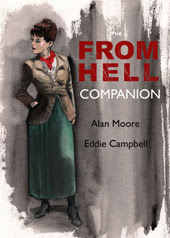


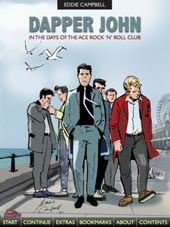
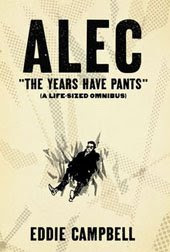
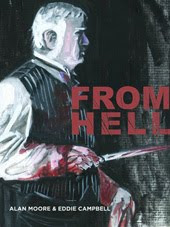
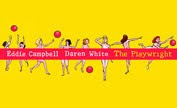
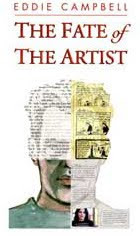
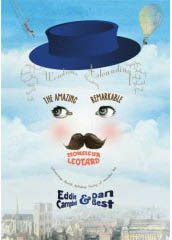





13 Comments:
me first!! says Jason Das of Brooklyn, NY. Snoot!
After my initial rush: I would love to have that lovely drawing in the mail, Mr. Campbell, please. Thanks for giving my some reason to feel good about staying up so damn late wrestling a computer.
I've been loving your blog (though I'm still not sure I'm motivated to decode Hogarth, or even decode the explanations of why he's so hard to decode.)
Sounds like poor Hogarth is being analized to death.
Whereas it is most likely true that there is much more there than meets the eyes, I'd like to think that, should he be able to read all these savant theories, the guy'd have a fit and - hopefully - a good laugh.
Dosn't tickle you that in a couple of centuries people might be doing the same thing about YOUR creations ?
Nathalie
Aww. Dang. Well done, Jason. The early bird catches the snooter... and I'll be quicker next time ;P
Yay for your blog, Eddie. I'm a very happy reader once again, now that I can tune in to Radio Campbell for my daily ration of chewing gum for the mind, only with more protein, more fibre and more satisfying flavour... And now I'm not a comment virgin any longer :) Very best to you and the Clan, from Dianna in Tasmania x
Strange, this week I am poring over the Dover collection of Hogarth prints, and further internet follow-ups lead me to Eddie Campbell (I am a fan). I think comics folks who are excited by the print series are barking up the wrong tree, just try and read them the way you read Archie or Julius Knipl, and see how fast you get bogged down. There is one significant cartoonist who shows an influence of the hard-to-read Hogarth scenes: Justin Green.
I was involved in the Hogarth thread in the earlier comments. I tend to pick up on aspects in the prints I can relate to (mainly, it's been the juxtapositions of opposites: the idle and industrious characters, for instance), and his satire on "geniuses" toiling in garrets).
My ADD has kicked in, and I have a natural resistance to academic writing, but maybe I'll muddle through the reading sometime.
Should really be putting these things on my own blog. Oh well: Eddie, you're an inspiration! And thanks for doing this.
Actually, looking at the Paulson and Dorment thing, the back and forth, and wheels within wheels reminds me of your "Gull Catchers" and I see them in that Red Queen's race, with their butterfly nets.
Hogarth is a completely different version of a "sequential art" to borrow the popular phrase, and it would be a lot nicer to have some more of his techniques adapted for modern comic storytelling. But as you say, it's kind of hard to argue that comics are a direct descendant when 90% of comic creators have never touched Hogarth at all.
One person (or era) that I've always seen overlooked when looking at the predecessors of comics is James Gillray and the Georgian satirical comics that appeared in newspapers back then. They are clearly comics, they have speach balloons and everything. Yet I've never heard them mentioned.
Serendipity. My copy of AFTER THE SNOOTER arrived in the mail yesterday.
This comment has been removed by the author.
That extended nose also looks a little like a wee willy. Even funnier. By the way, I've posted the story of our dinner in San Diego on my blog. You'll have to let me know if it's how you remember it.
Nathalie,
Actually, I understand that much of the fun in Hogarth's and other pictures of the era was to be had by bringing out the folio of prints after dinner when the gentlemen would be passing the port bottle around, and the allegories and allusions would be gleefully spotted and discussed.
Andrew J
These things need to be understood as the products of separate eras. thus the era of the satirical print was succeeded by the era of the humour magazines which took over around 1830, and then of the newspaper cartoons. The era of the newspaper cartoon really only starts in the 1880s after McDougall sold a big cartoon to the NY World after it was turned down by Puck magazine. By the 1920s the funny mags had all but disappeared. It's important to understand 'comics' as a part of this era just as Hogarth and Gillray belong to the era of the print and the print shop. As Jack or someone pointed out earlier, engravings and etchings were expensive to purchase, but they were customarily displayed in the print shop windows which is where ordinary people would follow them.
Christopher
I'll go have a look and get back to you.
Eddie
Christopher,
yes! that's the way it was. Good post!
and I had a very good night with you and the wife of your bosom. Do pass on my regards.
best
Eddie
Post a Comment
Subscribe to Post Comments [Atom]
<< Home